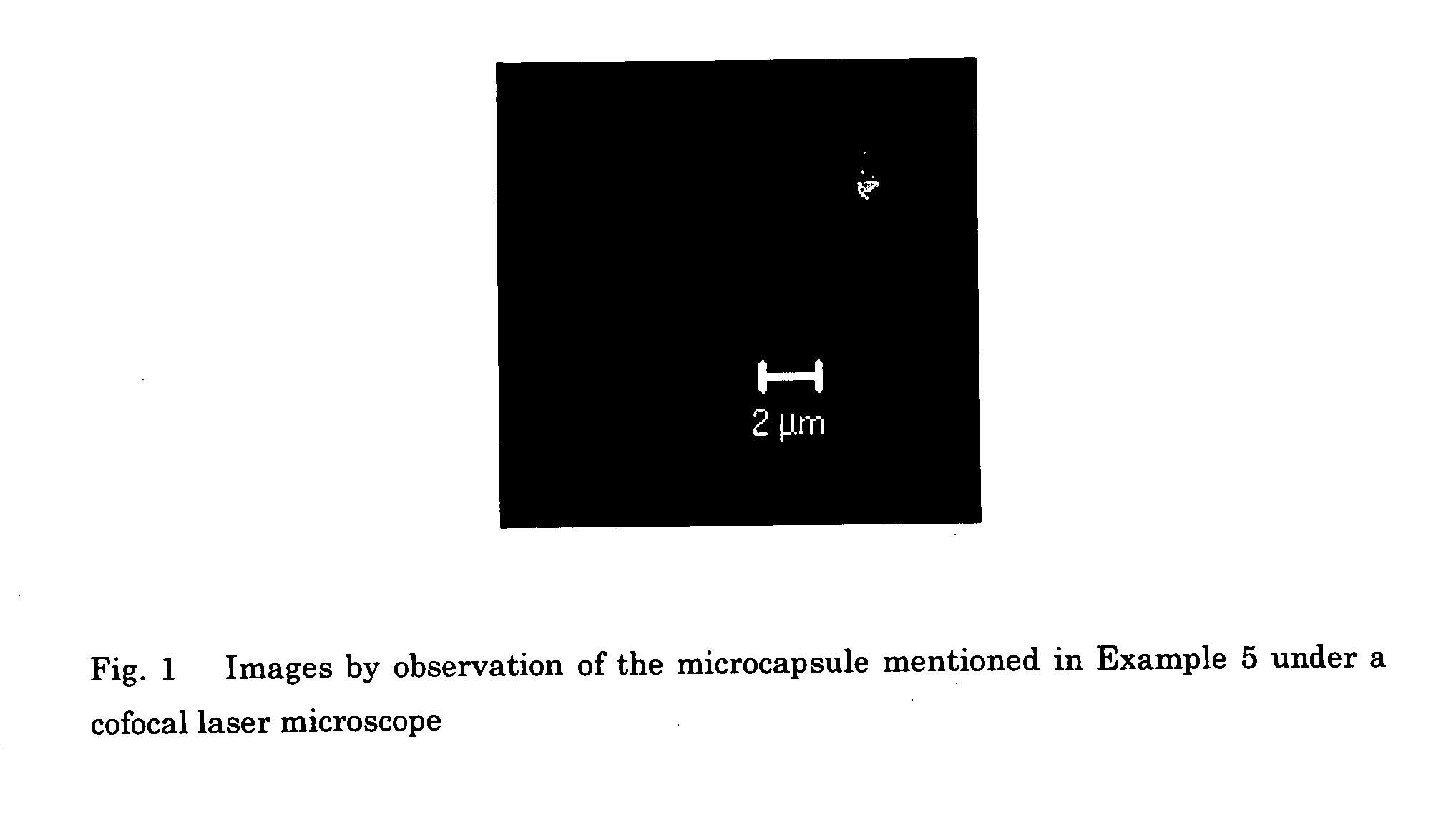Edible capsules
- Summary
- Abstract
- Description
- Claims
- Application Information
AI Technical Summary
Benefits of technology
Problems solved by technology
Method used
Image
Examples
manufacturing example 1
Manufacture of Poly-γ-Glutamic Acid (Molecular Weight: 30,000)
Bacillus natto (Accession Number at the National Institute of Bioscience and Human Technology, Agency of Industrial Science and Technology: FERM P-10607) belonging to Bacillus subtilis was subjected to a seed culture at 32° C. for 24 hours in a culture solution (pH 6.0) containing 0.3% of malt extract, 0.3% of yeast extract, 0.5% of polypeptone and 1.0% of glucose using a three-liter mini-jar. Subsequently, 0.5% of the seed-cultured solution was inoculated to a culture solution (pH 6.4) containing 7.5% of glucose, 1.5% of ammonium sulfate, 0.15% of magnesium sulfate, 5.0% of monosodium glutamate and 1.0% of sodium chloride using a 500-liter jar and incubated at 37° C. for 48 hours at 250 rpm and aeration of 0.5 to 1 vvm. After the incubation, the culture solution was subjected to a GPC method to measure the amount of poly-γ-glutamic acid, which was determined to be 3.0 g / dl. The resulting culture solution (50 liters) was...
manufacturing example 2
Manufacture of Poly-γ-Glutamic Acid (Molecular Weights: 260, 000, 490,000 and 800,000)
After the culture solution was prepared according to the method described in Manufacturing Example 1, the pH was adjusted and the solution was precisely filtered. The same operation as in manufacturing Example 1 was performed except that the treatment for making the molecular weight low was at 50° C. for 0, 10 or 30 minute(s) to give poly-γ-glutamic acid. Weight-average molecular weights by a GPC-MALLS method were 800,000, 490,000 and 260,000, respectively.
Characteristic values shown in Examples and Comparative Examples were measured and judged according to the following methods.
<Appearance>
It was judged by naked eye.
<Appropriateness for Molding>
It was judged by naked eye whether molding of capsules was possible.
<Viscosity of the Solution Containing Shell Substrate>
It was measured at 25° C. using a viscometer of type B (manufactured by K. K. Tokyo Keiki).
<Water Conten...
example 1
A solution containing a cross-linked substance of poly-γ-glutamic acid as shell substrate was prepared according to the following composition. Poly-γ-glutamic acid, deionized water and glycerol were added using a one-liter beaker followed by stirring. Then a 6N hydrochloric acid was added with stirring to prepare a poly-γ-glutamic acid solution. Further, 0.2M aluminum potassium sulfate dodecahydrate was added thereto followed by stirring and then a 10N sodium hydroxide was added thereto followed by stirring. When sodium hydroxide was added followed by stirring, viscosity of the solution simultaneously increased. When no more change in the viscosity was noted, stirring was finished to give a solution containing a cross-linked substance of poly-γ-glutamic acid as shell substrate.
Poly-γ-glutamic acid of Manufacturing Example 1160 partsDeionized water200 partsGlycerol (special reagent grade; 40 partsmanufactured by Wako Pure Chemicals)6 N Hydrochloric acid (special reagent grade; 48 ...
PUM
| Property | Measurement | Unit |
|---|---|---|
| Percent by mass | aaaaa | aaaaa |
| Substance count | aaaaa | aaaaa |
| Substance count | aaaaa | aaaaa |
Abstract
Description
Claims
Application Information
 Login to View More
Login to View More - R&D
- Intellectual Property
- Life Sciences
- Materials
- Tech Scout
- Unparalleled Data Quality
- Higher Quality Content
- 60% Fewer Hallucinations
Browse by: Latest US Patents, China's latest patents, Technical Efficacy Thesaurus, Application Domain, Technology Topic, Popular Technical Reports.
© 2025 PatSnap. All rights reserved.Legal|Privacy policy|Modern Slavery Act Transparency Statement|Sitemap|About US| Contact US: help@patsnap.com



